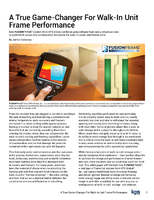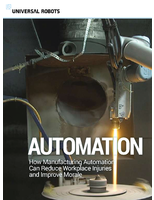Linde Engineers Developing Alternatives to Helium in Several Applications
Share:
Murray Hill & New Providence, New Jersey, U.S.- Faced with a sourcing shortage of helium, several segments of industry, working with Linde North America engineers, are welcoming new product developments that lead to lower helium requirements, or replacing helium altogether, without significantly sacrificing application quality.
Linde North America is a member of The Linde Group, a world-leading gases and engineering Company. Joe Berkmanns, national technical manager for Linde Canada, Ltd., said, "Helium has become the fluid of choice for many industrial processes, mostly because of its physical and thermal properties. However, there are certain areas where we have successfully substituted for helium, or reduced the amount of helium required, with little or no adverse effect on quality, productivity or process robustness."
Berkmanns points to the cold spray coating process as one example. Cold spraying is a coating technology that differs from traditional thermal spray processes in temperature and velocity of the powder particles that are deposited on the target surface. The particles remain solid at low temperature and adhere to the surface through plastic deformation upon impact with high speeds. These high speeds were achieved in the past using helium with its low density as a propellant. Developments with regards to nozzle and gas supply technology allow users to use nitrogen now in many cases.
In the metal fabrication industry, shielding gas mixtures for arc welding can also be modified to use less helium. Helium is added for its higher ionization energy and thermal conductivity, which means more energy is needed to establish and maintain the arc. More energy in the arc means deeper penetration and faster welds. But these properties of the helium can also make the arc unstable and less focused. This defeats the original intent of an increased heat input and is viewed as a detriment by the welders. Small additions of active components can stabilize the arc, concentrate the heat input and thus allow for a reduction of the helium content.
MISON® shielding gases use small nitric oxide (NO) additions to achieve higher heat input through a concentrated, stable arc and, at the same time, offer the additional benefit of reducing harmful ozone emissions of the welding process. "It isn't just a matter of changing the mix, however," said Berkmanns. "Changes to process parameters, the equipment and sometimes the parts may be necessary. With Linde's extensive experience in welding technology, we're able to holistically look at all of these factors and reduce helium consumption but still maintain the integrity of the weld."
When it comes to leak detection, there are certain areas that have been untouchable where helium's application is concerned. "That firewall is beginning to crumble in a number of areas," Berkmanns points out. "We're finding that we can substitute other gases in areas not looked at before." These areas include fuel injection systems for automobiles and refrigeration coils in a variety of applications.
The Linde Group is a world-leading gases and engineering company with around 62,000 employees in more than 100 countries worldwide. In the 2011 financial year, Linde generated revenue of EUR 13.787 bn (USD 18.1 bn). The strategy of the Group is geared towards long-term profitable growth and focuses on the expansion of its international business with forward-looking products and services. Linde acts responsibly towards its shareholders, business partners, employees, society and the environment - in every one of its business areas, regions and locations across the globe. The Group is committed to technologies and products that unite the goals of customer value and sustainable development.
For more information, see The Linde Group online at www.linde.com.
Contact:
Amy Ficon
Linde corporate communications
908-771-1491
amy.ficon@linde.com
Vinita Abraham
Linde Corporate Communications
908 - 771 - 1366
vinita.abraham@linde.com




